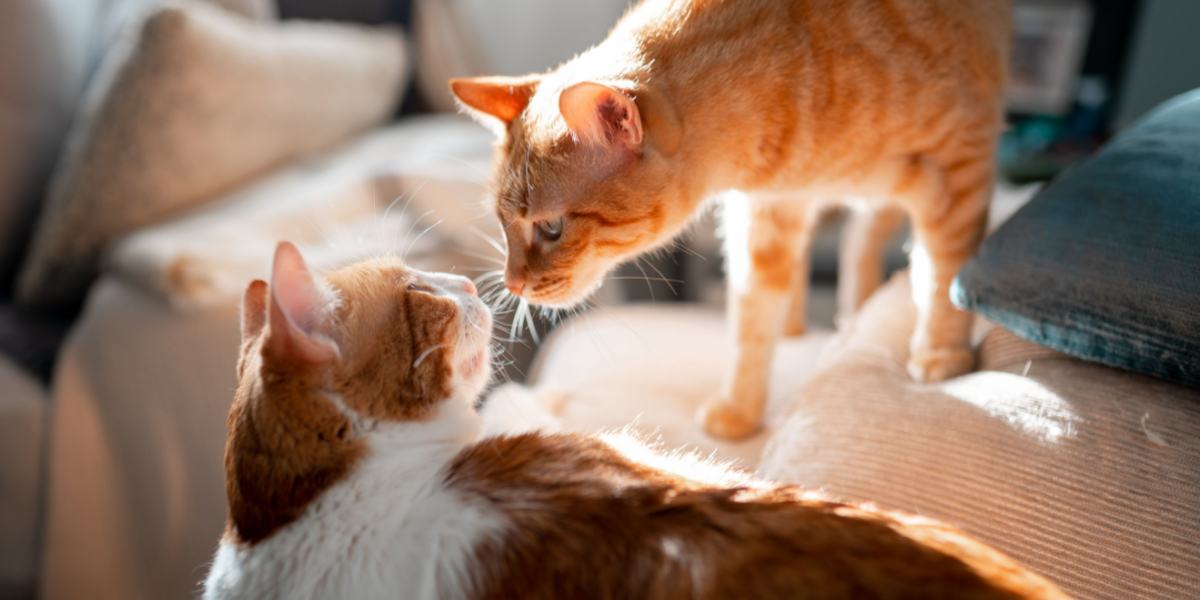
It can be stressful when cats don’t get on, and not just for the rest of the family! Cats can get very stressed by conflict in the household, and it can cause them to become ill, suffering from diseases like idiopathic cystitis, gut problems, and behavioral issues.
Whilst there’s no magic wand to wave to get cats to like each other, there are some things you can do to help.
How To Introduce A New Cat To The Household
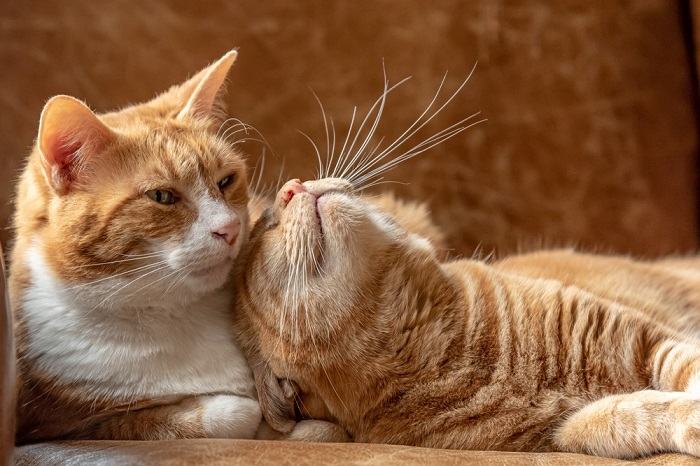
Introducing a new kitten to the resident cat? Getting the introductions right is the first step in making sure your cats like each other. You might also have to re-introduce cats that have been separated, perhaps because of a stay at the vet. The key is to take things slowly – the slower the better – as cats don’t like change!
Also Read: How To Introduce Cats To A New Home
The first thing to do is set your house up for success. Make two separate areas for your cats, separated by a door so they can’t see each other. Feed the cats on either side of the door, so they can smell but not see one another. This allows them to build up a positive association with one another’s smell.
Take a blanket out of each bed and swap them, so they get used to one another’s scents. After a day or two, and once the new cat seems settled into their new home, swap the cats over, so each has access to the other one’s scent all over the room.
Once they’re very familiar with each other’s scent and seem calm eating each side of the door, it’s time to introduce them. First, try to introduce them with a see-through barrier – a mesh baby gate or a glass door works well. This allows the cats to see one another without feeling too threatened. Don’t force them to sniff one another or interact at all, but supervise closely.
Once several meetings like this have happened, and both cats seem relaxed, it’s time to try letting the cats meet. Choose a neutral space that both cats have experience of, and preferably with the option of escaping up high. Let the cats approach each other.
Signs Your Cats Aren’t Getting Along

Try to look out for signs of tension, which might suggest hostility.
If the introduction isn’t going well, or if you aren’t sure if your cats are friendly or not, there are some signs of aggression in cats you can keep an eye out for.
Apart from the obvious scrapping, you might also notice your cats are:
- Staring at one another
- Hissing at one another
- Blocking access to important resources (like sitting in a doorway)
- Avoiding one another
Cats are often remarkably subtle when they aren’t getting on. Being solitary creatures, they don’t have much vocabulary and tend to avoid fights where possible (these could be fatal in the wild), preferring to communicate with smells and subtle body language changes that we humans can easily miss! Try to look out for signs of tension, which might suggest hostility.
How can you get two cats to like each other? Read on…
How Do I Make My Cats Like Each Other?
#1 Separate And Start From The Beginning
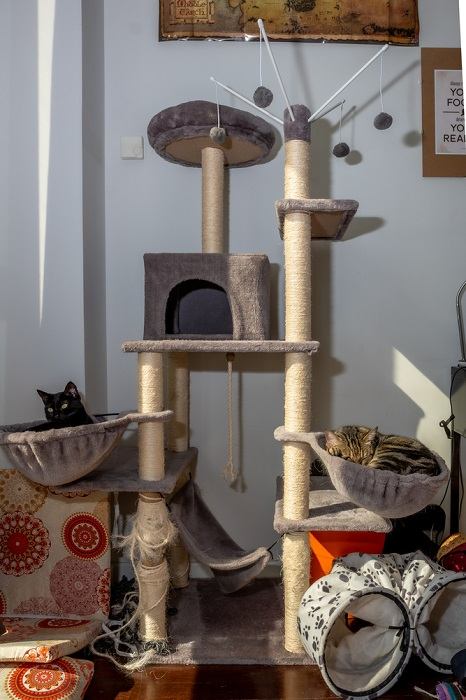
The first step to getting cats to like each other is to separate them and start from the beginning as though you were introducing them for the first time.
The first step to getting cats to like each other is to separate them and start from the beginning as though you were introducing them for the first time. Follow our instructions above for introducing a new cat to the household, even if the cats previously got on fine.
#2 Go Slow
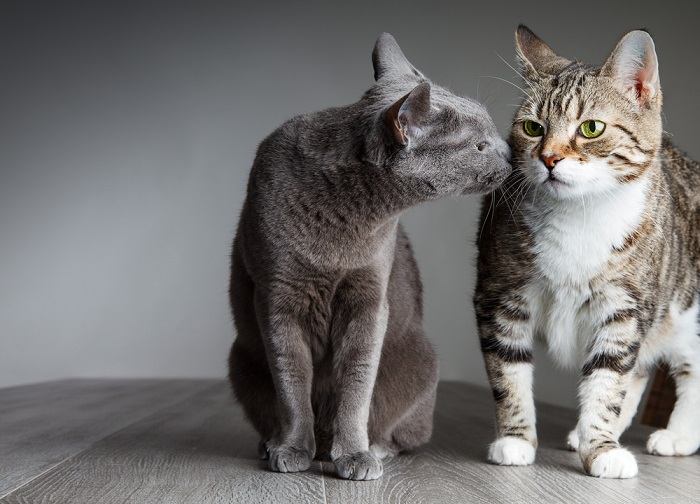
Even if your cats were previously friends, it can take weeks to get them to like each other again.
Cats don’t like to be rushed. Don’t expect cats to get on overnight, it’s going to take time. Even if your cats were previously friends, it can take weeks to get them to like each other again.
#3 Increase Their Resources
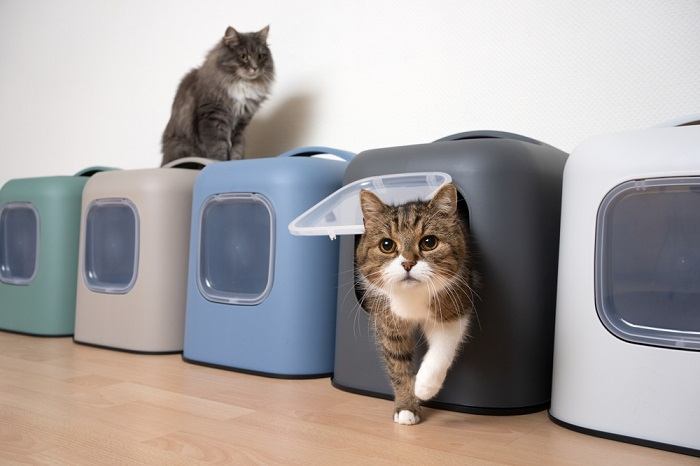
Cats get stressed and fight when they think there isn’t enough of something to go around.
Cats get stressed and fight when they think there isn’t enough of something to go around. Ensure you’ve got enough key resources so nobody has to share. This means each cat needs their own litter box, food bowls, water bowls, beds, scratching posts, and favorite toys.
It’s also good practice to have one spare of each of these so that there’s more than enough for everyone. If your cats go out, the cat flap can be a stressful area – consider installing another cat flap or creating a cat escape route from a window.
#4 Separate Their Spaces
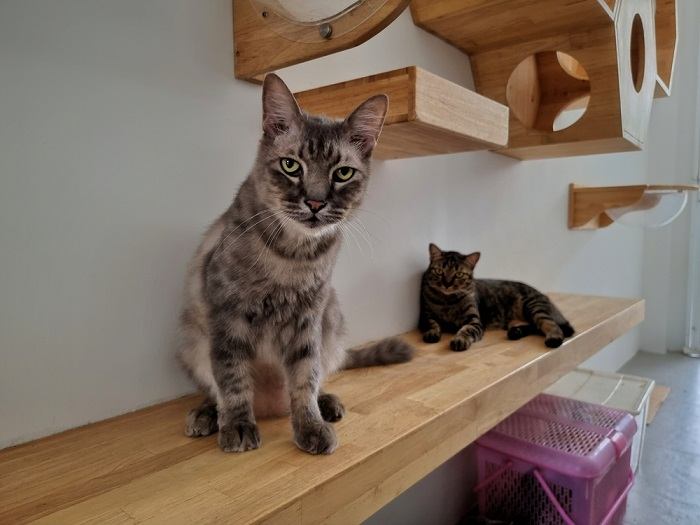
Cats tend to fight over resources if they’re too close together.
When deciding on your resource placement, try to think like a cat. Cats tend to fight over resources if they’re too close together. You need to create a home territory for each cat that doesn’t overlap with the other cat, so they can each have everything they need without coming into contact with one another.
If you have two floors to the house, try putting everything for one cat on one floor, and everything for the other on the other floor. That way each cat only shares if they want to.
Also Read: Why Is My Cat Pooping On The Floor?
#5 Use Pheromones
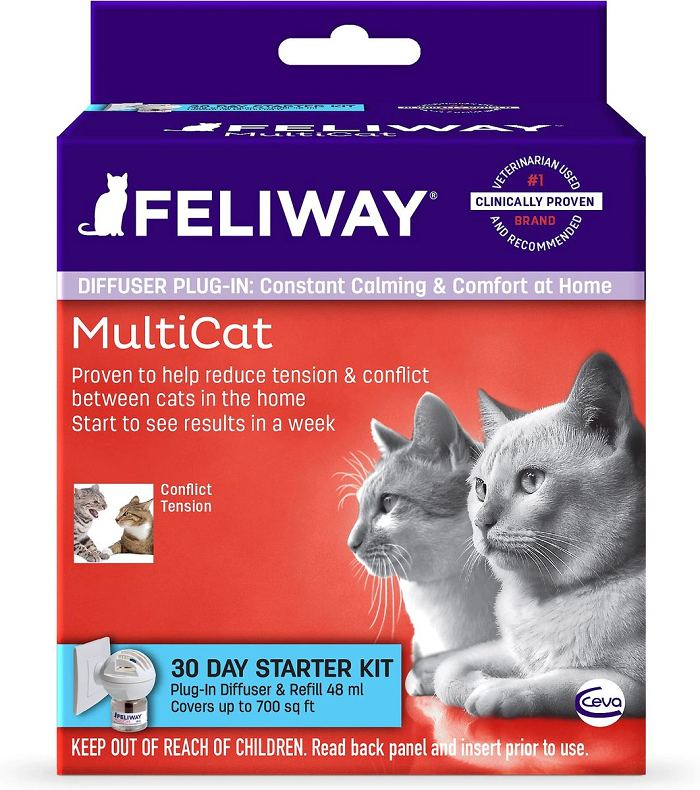
Feliway MultiCat is a synthetic pheromone that mimics the calming signals sent out by mum to stop her kittens from fighting.
You should also look at adding feline pheromone diffusers to the house. Feliway MultiCat is a synthetic pheromone that mimics the calming signals sent out by mum to stop her kittens from fighting. It can help cats to get along. Make sure you follow instructions for how many you need for your house and the best place to put them for maximum effect!
Also Read: How To Help Cats Get Along?
#6 Reward Good Behavior
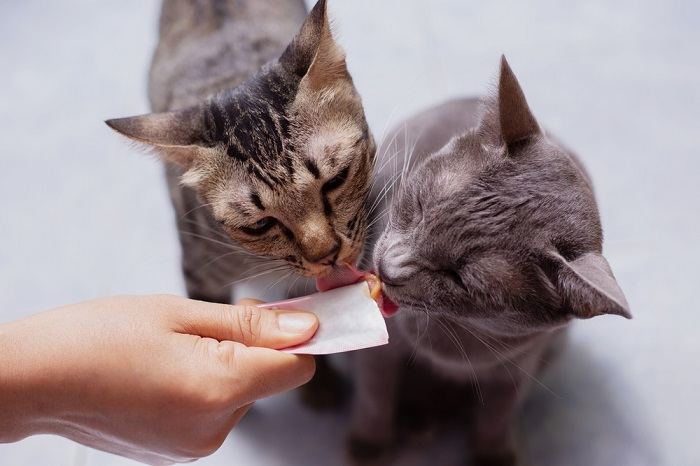
Anything you would do to train a dog, you can use to train a cat.
A lot of people think cats can’t be trained, but that’s not true at all. Anything you would do to train a dog, you can use to train a cat. If your cats are sometimes ok together, rewarding positive and calm reactions is key.
Also Read: 6 Surprising Similarities Between Cats And Dogs
You can start by giving your cats a treat if they’re in the same room without fighting (you’ll need two people or an accurate throw so you don’t force your cats to come close together). Verbal praise is also a good reward!
#7 Schedule A Vet Visit

Many causes of aggression are due to underlying pain or illness.
Many causes of aggression are due to underlying pain or illness. It makes sense – cats that are uncomfortable or are feeling under the weather are going to be extra defensive. So, if your cats used to get on and are now fighting, it’s a good idea to check in with a vet to ensure there’s nothing amiss.
Also Read: Top 10 Things Your Vet Wishes You Knew
#8 Provide Some Mental Stimulation

Just like bored teenagers, bored cats might be more likely to fight.
Just like bored teenagers, bored cats might be more likely to fight. Not only that, but bored cats have more time to feel anxious, and that can result in some pretty unhappy kitties! Instead, make sure they’ve got plenty of enrichment by providing plenty of toys, rotating toys regularly, and using food puzzles to help them satisfy their hunting instincts.
#9 Check Their Neuter Status

Neutered cats produce fewer hormones and can have reduced territorial behavior.
Reduce stress in your household by neutering any entire cats, both females, and males. Neutered cats produce fewer hormones and can have reduced territorial behavior.
Remember, cats often fight when there isn’t enough of something to go around, so the last thing you need is to throw hormones into the mix! Intact cats have one aim – to reproduce – and this can make them much more territorial whilst they hunt for a mate.
#10 Call In A Feline Behaviorist

Cat behaviorists look at the whole picture and will be able to give you personalized advice for your situation.
If you’re still struggling, it’s time to involve a behaviorist. Cat behaviorists look at the whole picture and will be able to give you personalized advice for your situation. This might involve medication. In some circumstances, rehoming one of the cats will be necessary to keep the peace, but a behaviorist will help you avoid this wherever possible.
Also Read: 5 Easy Tricks to Teach Your Cat According to a Cat Behaviorist
Conclusion
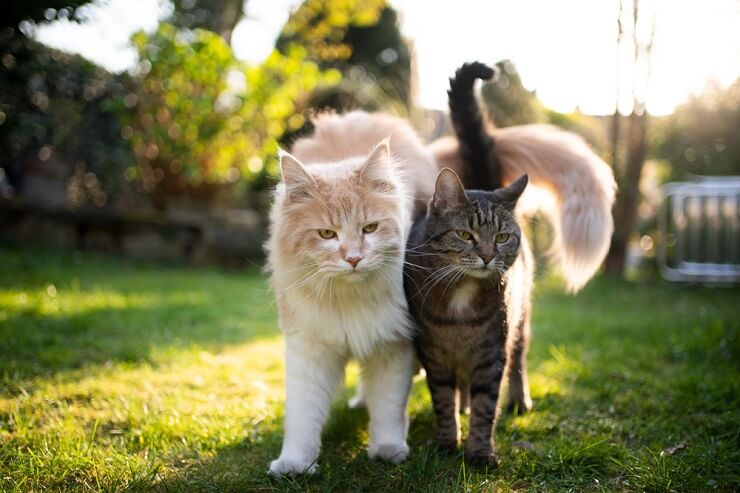
It can be difficult to get cats to like each other after a fight, but it’s important for everyone’s welfare that they feel comfortable around one another.
Separating the cats feels like a backward step but is the best thing you can do as a starting point before slowly starting to rebuild the relationship. Don’t forget to seek help if you need it – veterinarians and behaviorists may be able to help!
Also Read: Are My Cats Playing Or Fighting?
Frequently Asked Questions
Should I let my cats fight it out?
If your cats start fighting, it’s best to separate them as soon as possible. Cat fights are usually short, with one cat running away to end the fight. They can still do each other a lot of damage though!
Don’t get between them, as you could get badly bitten. Instead, try to stop the aggressor using a loud noise, then separate them. Get any wounds seen by a veterinarian as soon as possible, as fight wounds almost always get badly infected. Try to reintroduce them, slowly, using the method outlined above.
How do you get two cats to bond?
Most cats co-exist, but some cats form a true bond. This is easier with sibling pairs, but any cats can form a bond. Try to find cats with similar personalities, ideally of a similar age, and take steps to introduce them slowly. Given time and plenty of positive experiences, some cats will form a bond, where they actually enjoy being near one another.
How do I stop one cat from attacking my other cat?
The best way to stop cats from attacking one another is to temporarily separate them. Then, redesign the space they’re in, adding in more resources and hiding places to help them co-exist. Once you’ve done that, slowly reintroduce the cats using the introduction process outlined above.







